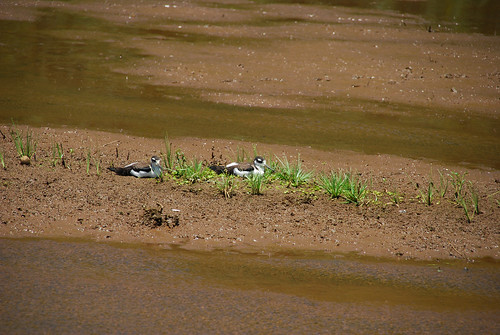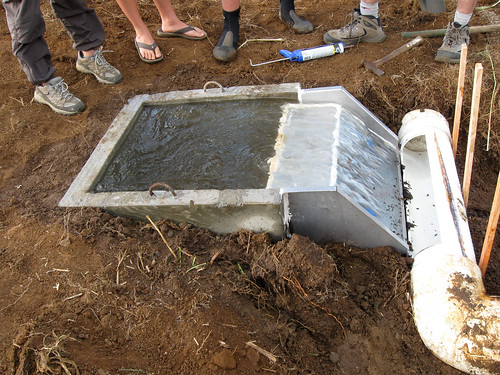
Coastal wetlands the world over are known for harboring an impressive array of plants and animals. In the Pacific Islands, wetlands not only provide habitat for many unique species, including some threatened and endangered waterbirds, but also support communities of people who rely on these special places for food and other essentials.
Human development, agriculture, and rising seas are encroaching upon these wetland ecosystems and causing visible and profound changes. Another threat, less obvious to the casual observer, lurks beneath the water’s surface: non-native fish. Researchers with the U.S. Forest Service Pacific Southwest Research Station’s Institute of Pacific Islands Forestry are studying the threats posed by exotic fish species and working with partners to battle the gilled invaders.
Nearly a decade ago, Forest Service aquatic ecologist Rich MacKenzie realized that, due to a lack of data, no one really knew the scope of the problem. Between 2007 and 2010, he and collaborators took stock of 40 wetlands across Hawaii’s five main islands to evaluate water quality and the overall condition of these wetlands, including their aquatic wildlife makeup.
“We discovered that tilapia and poeciliids were present at the majority of sites, which included coastal wetlands, freshwater wetlands, and riparian wetlands along streams,” MacKenzie said. Their assessment, available in the Forest Service Treesearch publication database, published in the journal Estuaries and Coasts.
Tilapia and poeciliids, such as mosquito fish, took up residence in the wetlands of Hawai`i and the western Pacific Islands in the early part of the 20th Century, mostly because people put them there.
“Many tilapia species were introduced to wetlands as a food resource for humans,” MacKenzie said. “And many species of poeciliids have been released to aquatic ecosystems for mosquito control or as unwanted aquarium pets.”
They’ve been wreaking havoc ever since.
The exotic fish thrive in these waters because they can tolerate a range of conditions, including temperature and salinity, and are able to reproduce all year. And they are omnivorous, so aquatic plants and insects—essential food for native fish and waterbirds—are always on the menu. In a follow-up study published in Ecological Applications, MacKenzie and other scientists compared invaded and non-invaded Hawaiian streams and documented significant losses of insects and native fish in the presence of exotic fish.
In 2012, MacKenzie presented these findings to scientists and managers at a Hawaii Wetlands and Waterbirds meeting, and concluded with a call to action. Kim Uyehara, a biologist at the Hanalei National Wildlife Refuge on the island of Kaua`i, later approached him. Together, they hatched a plan to keep exotic fish out of wetland areas managed for the conservation of threatened and endangered Hawaiian waterbirds.
With support from the U.S. Fish and Wildlife Service’s Inventory & Monitoring Initiative, MacKenzie, Uyehara, and other refuge staff installed a prototype fish screen on the refuge to exclude exotic fish from streams. As part of a year-long project, they tested the effectiveness of the fish screen barrier and monitored insect emergence in the absence of exotic fish.
“We saw a significant increase in aquatic insect production, which provides food for native waterbirds, compared to an adjacent unit where these fish were present,” MacKenzie said. In fact, the fish screen was so successful that other larger fish screens have been installed in other wetland areas across the Refuge.
The fish screens are an important part of a sustainable management strategy. “The use of fish barriers provides an effective, non-lethal management tool to keep non-native fish out of areas that are managed for threatened and endangered species,” explains MacKenzie.
And with exotic fish excluded and competition for food reduced, streams can better support hungry waterbirds and their young. This is important for such species as the endangered ae’o, or Hawaiian Stilt, a slender wading bird that thrives on invertebrates and other aquatic organisms.
“Egg-laying females and chicks have high physiological demands for protein, fats, and calcium and need to eat large amounts of invertebrates in a short period of time,” Uyehara said. “Effective fish barriers mean more aquatic insects and more endangered chicks making it to maturity, contributing to long-term recovery.”

